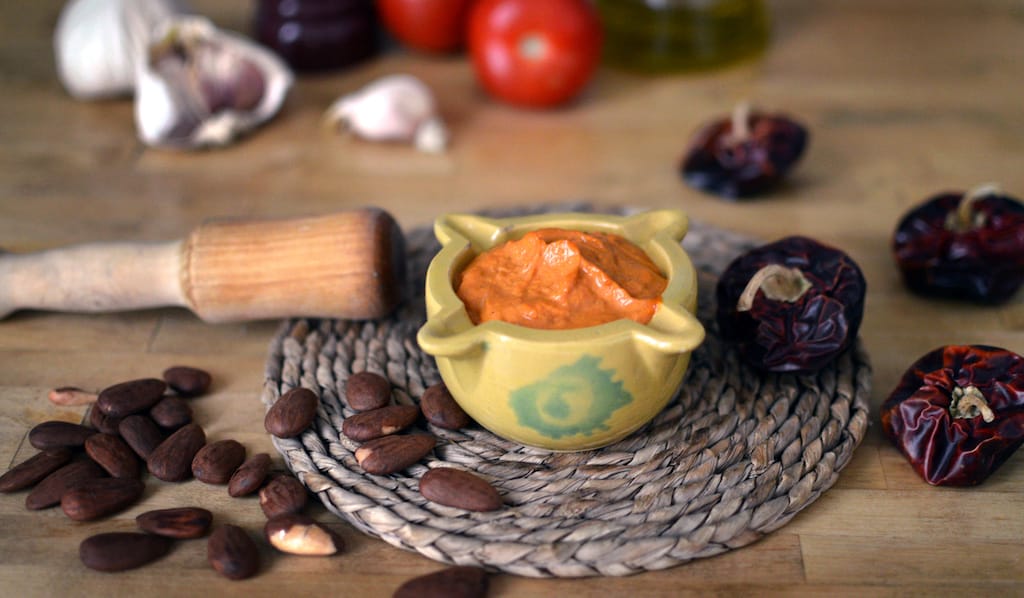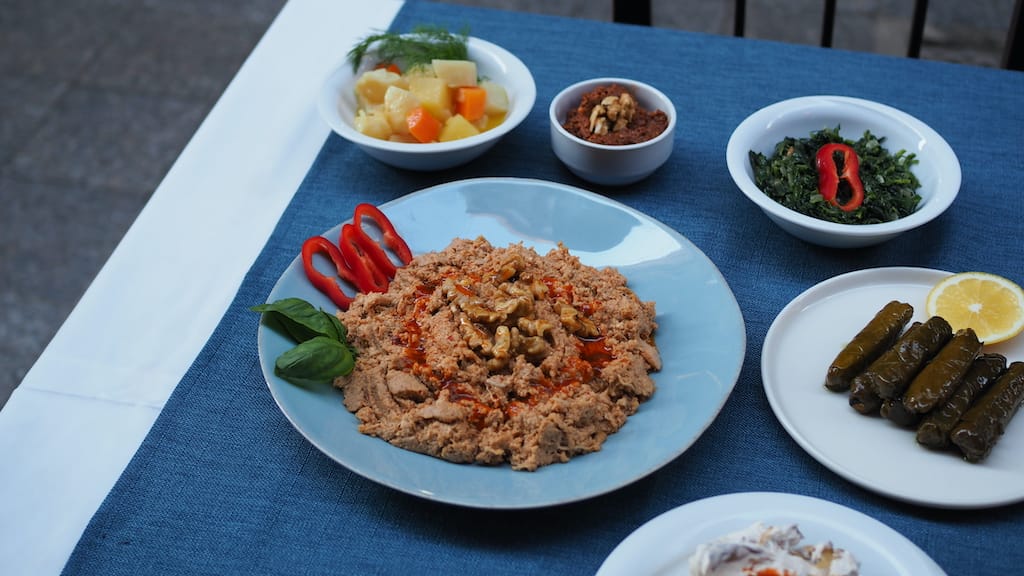It’s fall and the wonderful farmers markets of Athens are filled with the season’s harvest; fresh walnuts and chestnuts, persimmons, pomegranates, quince and, of course, the two queens of the season: pumpkin and butternut squash.
I love using butternut squash or pumpkin in a variety of recipes and these traditional fritters are one of my favorite ways to enjoy this nutritious vegetable. This is a recipe that I include in my cookbook Salt of the Earth (Quadrille, 2023), and it is inspired by the traditional version from the region of Messenia in southern Peloponnese. In my take on this dish, I add some chopped green olives as I like variety in textures and flavors and the olives, along with crumbled feta, add a beautiful layer of umami to the fritters.

Feel free to substitute the butternut squash with pumpkin or even carrot or sweet potato, which are all in season at the moment. The result will be very similar (though slightly drier if using carrots, which contain far less water compared to the pumpkin or butternut squash). You may also play with the herbs you use – a mix of several really shines in such simple and humble recipes, but you can easily go with just mint and parsley if dill is not widely available in your region or grocery store.
The fritters are very versatile, easy to include in a nutritious bowl, alongside rice or a nice salad, or served with a creamy dip (hummus will also taste great with these).
The following is an extract from the book Salt of the Earth, Secrets and Stories from a Greek Kitchen, 2023, Quadrille:
“Fritters made from seasonal vegetables or pulses are prepared in most parts of Greece, using courgettes (zucchini), aubergines (eggplant), potatoes, leeks or mixed leafy greens like spinach and sorrel – even nettles. The islands are particularly big on these kinds of fritters, or pseftokeftedes, as they call them, meaning “fake meatballs.” They are primarily a result of the “poor kitchen” and of the long fasting periods of the past, when methods were invented to replace meat or other animal products.
The fritters are typically fried in order to acquire a crispy outer layer, and although some home cooks now prefer to bake them, I do insist on the traditional fried version – they are delightfully crispy on the outside, moist and fresh on the inside, and they don’t feel heavy or oily at all.
The secret for success here is to let the grated butternut drain well and to use plenty of chopped fresh herbs and onions. The fritters are typically served with yogurt or a yogurt- based dip such as tzatziki. Here, I pair it with a simple and versatile minty yogurt dip, which you can use in many other recipes.
Recipe: Butternut Squash Fritters with Olives and Herbs
Serves 4
Ingredients
350g (12oz) butternut squash, grated (using the big holes of a box grater)
1 tsp salt
1 medium white onion, finely chopped
2 spring onions (scallions), finely chopped
75g (2 1⁄2oz) pitted green olives, roughly chopped
4 tbsp chopped mint
2 tbsp chopped parsley
2 tbsp chopped dill
2 eggs, lightly beaten
100g (3 1⁄2oz) feta, crumbled
50g (2oz) plain (all-purpose) flour
1 tsp baking powder
Oil, for frying (I use a light olive oil or sunflower oil)
For the yogurt dipping sauce
4 tbsp Greek-style (strained) yogurt
1⁄2 tbsp chopped mint
1⁄2 tsp ground coriander
1⁄2 tsp finely grated lemon zest
2 tsp olive oil
Sea salt and freshly ground black pepper

Instructions:
First, prepare the dipping sauce in order for it to be chilled by the time the fritters are ready. In a bowl, combine all the ingredients, adding salt and pepper to taste. Cover and place in the refrigerator.
Place the grated squash in a colander. Add the salt, toss, and let stand for 30 minutes to drain, then squeeze and press it with your hands to remove any last bit of water. Place in a large bowl with the onion, spring onions (scallions), olives, herbs, beaten eggs and crumbled feta. Taste, to check the seasoning, and gently mix until just combined.
Sift the flour and baking powder into the bowl gradually, while mixing. The batter should be a little runny and not too thick or the fritters will be too starchy. Cover with clingfilm (plastic wrap) and place in the refrigerator for 30-60 minutes. (You can skip this step if you are short of time, but it really helps bring out all the flavors in a very nice way and makes it much easier to form the patties.) Form the patties into ping pong-sized balls and slightly flatten with your hand. Set aside.
Place a deep frying pan over medium-high heat. Pour oil into the pan to a depth of 1cm (1⁄2 inch) and heat. Once hot, add the fritters a few at a time (to keep the oil heat high so that they turn nice and crispy). Fry for about 2-3 minutes on each side or until crispy and golden. Once cooked, place on kitchen paper to soak up excess oil.
Serve with the yogurt dip on the side.”
 April 2, 2024 Grandma’s Folar Recipe
April 2, 2024 Grandma’s Folar Recipe
Folar is the generic name given to traditional Easter sweet bread in Portugal. Making it […] Posted in Lisbon March 20, 2024 Recipe
March 20, 2024 Recipe
Served as a sauce, romesco is certainly striking: It has an intense dark orange color […] Posted in Barcelona February 16, 2024 Recipe
February 16, 2024 Recipe
Some recipes are so deeply connected with the region from which they originate that they […] Posted in Istanbul
Published on November 02, 2023
Related stories
April 2, 2024
LisbonFolar is the generic name given to traditional Easter sweet bread in Portugal. Making it from scratch is somewhat of a long process, but being confined due to the coronavirus crisis, we seem to have a bit more time on our hands than expected. My family’s folar recipe is from my grandmother Felismina, who was…
March 20, 2024
BarcelonaServed as a sauce, romesco is certainly striking: It has an intense dark orange color and a dense texture that saturates and blankets whatever you dip in it. Once in the mouth, you get a piquant touch of vinegar, which is soon enveloped by the nutty creaminess of ground almonds (or perhaps hazelnuts) and olive…
February 16, 2024
Istanbul | By Lian Penso Benbasat
IstanbulSome recipes are so deeply connected with the region from which they originate that they are simply named after that place. Circassian chicken, an appetizer beloved in Turkey and throughout the Caucasus, is such a dish. The recipe itself takes on many different variations across different geographical locations, much like the mosaic of people and…


















































































